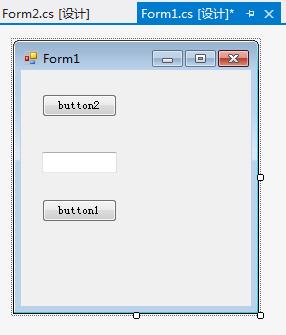主窗口后台代码:
using System; using System.Collections.Generic; using System.ComponentModel; using System.Data; using System.Drawing; using System.Linq; using System.Text; using System.Windows.Forms; namespace WindowsFormsApplication2 { public partial class Form1 : Form { public Form1() { InitializeComponent(); } //建立集合来记录 List<Form> AllForm = new List<Form>(); private void button1_Click(object sender, EventArgs e) { Form2 f2 = new Form2(this, textBox1.Text);//实例化类 f2.Name = "f2";//重新给其name赋值,以免发生冲突 OnlyOne(f2); }
//保证弹出窗口唯一的方法,私有 private void OnlyOne(Form FF) { bool hasForm = false; foreach (Form f in AllForm) { if (f.Name == FF.Name) { hasForm = true; f.WindowState = FormWindowState.Normal; f.Focus(); } } if (hasForm) { FF.Close(); } else { AllForm.Add(FF); FF.Show(); } } private void button2_Click(object sender, EventArgs e) { Form3 f3 = new Form3(); f3.Name = "f3"; OnlyOne(f3); } //弹出窗口关闭后,在集合里将其移除,避免误关或关闭后无法再次弹出 public void RemoveForm(Form ff) { AllForm.Remove(ff); } } }
弹出窗口的后台代码:
using System; using System.Collections.Generic; using System.ComponentModel; using System.Data; using System.Drawing; using System.Linq; using System.Text; using System.Windows.Forms; namespace WindowsFormsApplication2 { public partial class Form2 : Form { Form1 F1 = null; public Form2(Form1 f1, string uname) { InitializeComponent(); F1 = f1; label1.Text = uname + ",欢迎回来!"; } private void Form2_FormClosing(object sender, FormClosingEventArgs e) { F1.RemoveForm(this); } } }
